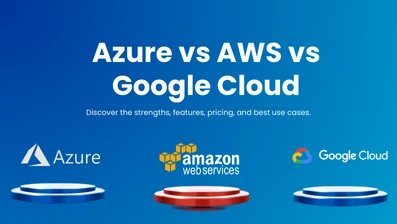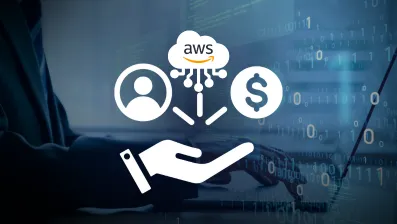If you’re using AWS, you know it’s a powerful platform packed with options. But with that power comes complexity and, often, surprisingly high costs.
Many businesses, especially startups and SMBs, struggle with managing their cloud spend efficiently.
That’s where cost optimization with AWS becomes a game-changer.
Optimizing your AWS costs isn’t just about cutting expenses. It’s about smartly balancing performance and budget, so you get the best value from your cloud investment.
In this guide, we’ll walk you through why AWS can get expensive, why cost optimization is essential, and the tools and strategies you can use to save money without sacrificing quality.
Why Is AWS Cost Optimization Important?
Managing your cloud costs effectively is crucial to running a sustainable business on AWS. Here are four key reasons why focusing on AWS cost optimization should be a top priority.
1. Control Unpredictable Spending and Avoid Budget Surprises
Cost optimization with AWS helps you control unpredictable cloud expenses. Without it, unexpected charges can inflate your monthly bill.
It prevents budget surprises by monitoring resource use closely. This makes your cloud spending predictable and manageable.
Cost optimization in the cloud ensures you avoid wasteful spending.
2. Maximize the Value of Your Cloud Investment
AWS cost optimization strategies help you get the most from your cloud spend.
You avoid paying for resources you don’t fully use. This maximizes the return on your cloud investment.
Cost optimization with AWS makes your infrastructure more efficient. You spend smarter, ensuring your money drives real business growth.
3. Unlock Funds to Drive Innovation and Growth
Cost optimization in the cloud frees up your budget for growth activities. You can reinvest savings into product improvements or marketing.
This supports innovation without needing extra capital. AWS cost optimization enables faster scaling by optimizing costs.
Your business can grow sustainably without overspending on infrastructure.
4. Gain a Competitive Advantage Through Efficiency
Companies using AWS cost optimization run more efficient operations. This reduces wasted cloud spend and improves profit margins.
Cost optimization with AWS helps you scale sustainably. Efficiency gained through cost optimization boosts agility and competitiveness.
It’s a key factor in staying ahead in a cloud-first market.
Tools and Services to Help You Save On Azure Cost
AWS offers several native tools that make cost optimization with AWS easier than ever.
But you don’t have to stop at AWS tools; many third-party solutions offer even deeper insights and automation.
► AWS Cost Explorer – Your Spending Dashboard
AWS Cost Explorer is one of the most user-friendly cost optimization tools AWS provides.
It gives you a visual overview of your spending over time, broken down by service, region, or account.
By tracking trends and identifying unusual spikes, you gain the clarity needed for cost optimization with AWS.
Plus, it offers suggestions like idle resource detection and reserved instance purchases , smart ways to save.
► AWS Trusted Advisor – Personalized Recommendations
AWS Trusted Advisor is like your personal guide for cost optimization in the cloud.
It continuously checks your AWS environment and suggests improvements in five categories, including cost.
From identifying underused EC2 instances to highlighting unassociated elastic IPs, it finds waste others miss.
Its automated checks help streamline cost optimization with AWS so you don’t overlook hidden savings or performance gaps.
► Third-Party Cost Optimization Tools
For advanced control, third-party cost optimization tools like CloudHealth, Cloudability, and ParkMyCloud are game-changers.
They integrate seamlessly with your AWS billing data and resource usage metrics. These tools provide powerful automation, cost forecasting, and even budget alerts.
They go beyond AWS-native features to offer granular insights for scalable cost optimization in the cloud, especially in large, complex environments.
Smart Moves to Slash Your AWS Bill Without Sacrificing Performance
Looking to cut your AWS costs without losing sleep over performance dips? You're not alone.
These proven strategies for AWS cost optimization can help you stretch your budget while keeping your cloud infrastructure agile and efficient.
And if you're not sure where to start, you can hire an AWS developer to guide the implementation; they’ll help you go from theory to tangible savings, fast.
Let’s walk through 10 solid tactics to master cost optimization with AWS and keep your finance team smiling.
1] Right-Size Your Instances Like a Pro
Oversized EC2 instances are one of the most common money drains in AWS.
By regularly analyzing CPU, memory, and network usage, you can right-size your instances to meet current needs, not outdated assumptions.
Tools like AWS Compute Optimizer make this easier by offering recommendations based on real data.
Right-sizing is one of the simplest ways to improve cost optimization in the cloud without impacting performance or availability.
2] Auto Scaling: Grow When Needed, Shrink When Not
Auto Scaling is your silent budget hero. It automatically adjusts resource capacity to match real-time demand, so you're not over-provisioning during off-peak hours.
Whether it's EC2, ECS, or DynamoDB, scaling dynamically ensures that you only pay for what you use.
This strategy for AWS cost optimization also prevents bottlenecks during traffic spikes, keeping your app responsive without bloated infrastructure costs.
3] Buy Reserved Instances and Savings Plans Strategically
If you have workloads that run consistently for a year or more, Reserved Instances or Savings Plans offer significant discounts up to 72%.
This strategy works especially well for predictable compute usage, like production servers or databases. The key is smart planning. You commit upfront but save a lot over time.
It's one of the most effective methods for cost optimization with AWS if you're ready to think long-term.
4] Delete Idle and Unused Resources Regularly
Unused resources often fly under the radar but quietly increase your monthly bill. Think EBS volumes not attached to instances, idle load balancers, or outdated snapshots.
Cleaning these up regularly is like tidying your room, simple but impactful.
AWS cloud security also benefits when you remove these forgotten services , fewer attack surfaces mean lower risks.
AWS Trusted Advisor and other cost optimization tools can identify these forgotten assets, making it easier to eliminate waste and reclaim budget without sacrificing any core functionality.
5] Spot Instances: The Unsung Heroes for Short-Term Tasks
Spot Instances let you tap into unused AWS capacity for up to 90% less than On-Demand prices.
Perfect for fault-tolerant workloads like batch jobs, CI/CD pipelines, or testing environments. However, AWS can reclaim these at short notice, so plan for interruptions.
Still, it’s one of the best-kept secrets in AWS cost optimization, offering substantial savings when reliability isn’t your top concern.
6] Turn Off Non-Essential Resources After Hours
Many businesses keep dev and staging environments running 24/7, even when no one's using them. That’s unnecessary spending.
Schedule shutdowns during nights and weekends to save big. You can automate this using scripts or tools like AWS Instance Scheduler.
It’s a no-effort way to achieve cost optimization in the cloud, especially if you’re managing multiple environments across departments or regions.
7] Move Cold Data to Cheaper Storage with Lifecycle Policies
Not all data is hot and ready. If you're storing old logs or backups on high-tier S3 storage, you're wasting money.
S3 lifecycle policies allow you to transition objects to cheaper tiers like S3 Glacier or delete them automatically after a set time. It’s an effective way to lower storage costs without manual intervention.
This tactic should be a part of every long-term strategy for cost optimization with AWS.
8] Tag Your Resources for Better Visibility
Tagging isn't just for organization, it’s essential for budgeting. Properly tagged AWS resources help you track costs by project, team, or environment.
This visibility is critical when scaling operations or allocating budgets. Without it, identifying spending patterns becomes a guessing game.
Many cost optimization tools rely on tags to deliver precise reports and forecasts, making it a must-do for businesses that want clarity and control.
9] Use Cost Anomaly Detection for Real-Time Alerts
Nobody likes surprise bills. AWS Cost Anomaly Detection is your first line of defense against unexpected spending spikes.
It uses machine learning to monitor usage patterns and sends alerts when anomalies occur.
This helps you respond quickly, whether it’s a misconfigured service or a runaway script.
Integrating this tool adds a layer of protection to your broader strategies for AWS cost optimization by flagging issues before they spiral.
10] Set Budgets and Monitor with AWS Alerts
Finally, control starts with awareness. Use AWS Budgets to set custom spending limits for services or projects.
Combine that with alerts, and you’ll get notified when you’re approaching thresholds or exceeding them.
This simple yet powerful strategy ensures you stay within your financial goals.
It’s not just about saving money but spending smarter, which lies at the heart of cost optimization with AWS.
Mistakes to Avoid in AWS Cost Optimization
While applying best practices helps, knowing what not to do can be equally powerful.
Many businesses unintentionally overspend on AWS due to avoidable missteps, even with good intentions.
Let’s highlight some common pitfalls so you can dodge them and stay on the right track for better cost optimization in the cloud.
1. Overprovisioning Resources “Just in Case”
It’s tempting to add more memory, CPU, or storage than needed, just to be safe.
But in AWS, overprovisioning translates directly into wasted money.
Instead of overestimating, monitor actual usage patterns and adjust instance types accordingly.
Leverage tools like AWS Compute Optimizer to right-size resources.
This avoids the “set it and forget it” trap that’s common in cloud environments.
2. Ignoring Cost Reports or Alerts
If you’re not regularly checking AWS Cost Explorer or setting up billing alerts, you're flying blind.
Surprise charges often result from this lack of oversight.
Make reviewing your cost reports a weekly ritual.
Use AWS Budgets and anomaly detection to catch irregular spikes.
You’ll gain more control and eliminate waste faster than you think.
3. Not Using Auto Scaling or Scheduled Scaling
Forgetting to enable Auto Scaling is like paying for a full buffet when you only need a snack.
Resources don’t need to run full throttle 24/7.
Auto Scaling and scheduling allow you to match resource supply with demand.
It’s one of the easiest ways to optimize costs, especially during off-hours or low-traffic periods.
4. Leaving Orphaned Resources Running
Detached EBS volumes, idle EC2 instances, and unused snapshots quietly eat into your budget.
A regular sweep using AWS Trusted Advisor or third-party cost optimization tools can help identify these stragglers.
Deleting unused assets should be routine, not optional.
5. Using the Wrong Pricing Model
Using only On-Demand pricing for long-term or predictable workloads is a huge missed opportunity.
AWS offers Reserved Instances, Savings Plans, and Spot Instances for better value.
Choosing the wrong pricing model leads to overspending.
Plan based on workload type and lifecycle, not just convenience.
6. Failing to Implement a Cost Optimization Culture
AWS cost optimization isn’t just a job for finance or DevOps, it’s a team effort.
If engineers, developers, and managers aren’t aware of cost impacts, savings will always be limited.
Train your teams. Promote shared accountability.
Make cost-efficiency a priority during every phase of development and deployment.
How DotStark Can Help You Master AWS Cost Optimization?
Managing cloud infrastructure is hard. Optimizing it is harder , unless you have the right partner.
That’s where DotStark, a vetted AWS development company, steps in.
We’re not just here to review your AWS bill , we dive deep into your architecture, usage patterns, and business goals.
Our team identifies inefficiencies, eliminates waste, and helps you implement sustainable, smart solutions for optimizing cost with AWS.
Here’s how we can help you:
- Architecture Review: We audit your setup to find scaling, storage, and compute inefficiencies.
- Budget Strategy: We design a tailored AWS spending plan based on your current and future needs.
- Automation Tools: We implement Auto Scaling, lifecycle policies, and scheduling solutions.
- Ongoing Monitoring: Real-time insights and alerts help you stay in control without micromanaging.
Whether you're just starting out or running a mature cloud setup, we make AWS cost optimization easy and impactful.
Let’s turn your AWS budget into a growth engine , not a money pit.
Conclusion: AWS Optimization Isn’t Optional , It’s Essential
Cloud costs can balloon quickly, especially when you're moving fast and scaling aggressively.
But here’s the truth:
You don’t have to choose between performance and budget control.
With the right mix of cost optimization tools, smart architecture, and proactive monitoring, you can cut waste, save money, and still deliver incredible customer experiences.
Remember, it’s not just about reducing costs , it’s about maximizing value.
That’s the real goal of cost optimization in the cloud.
Frequently Asked Questions
AWS provides native tools like AWS Cost Explorer, Trusted Advisor, and Compute Optimizer to help track and manage costs. For deeper analysis, third-party cost optimization tools such as CloudHealth or Cloudability offer automation, reporting, and forecasting features that make saving easier and scalable.
AWS cost optimization refers to the process of reducing unnecessary spending while maximizing the value of your AWS infrastructure. It matters because cloud costs can spiral quickly if left unmanaged. By optimizing, you save money, boost efficiency, and ensure your business is getting the best return on its cloud investment.
Ideally, you should review usage monthly, or even weekly during high-traffic or scaling phases. Regular reviews help you catch unused resources, monitor budget thresholds, and implement the latest strategies for AWS cost optimization proactively, not reactively.
Absolutely. In fact, cost optimization in the cloud is often more critical for SMBs. Every dollar saved can be reinvested into growth. With smart planning and the right strategy, even small teams can cut waste and scale efficiently without overspending on cloud infrastructure.
At DotStark, we specialize in cost optimization with AWS through architectural reviews, automation setup, budget planning, and active monitoring. Our experts ensure your infrastructure is lean, high-performing, and cost-efficient, helping you avoid waste while fueling business growth.









 +91 9680599916
+91 9680599916
 vanshika@dotstark.com
vanshika@dotstark.com
